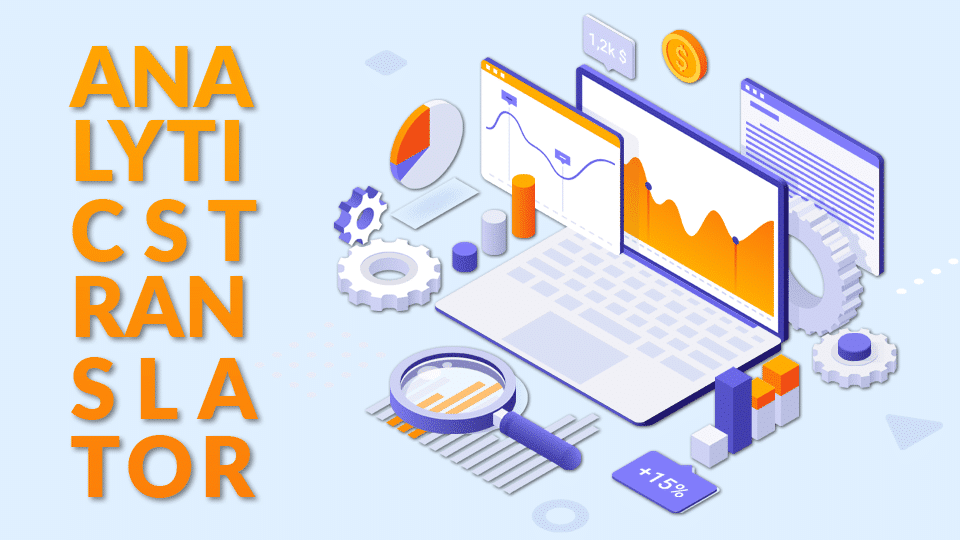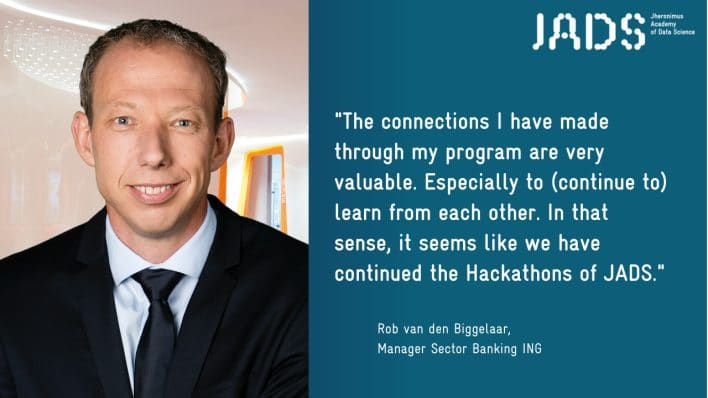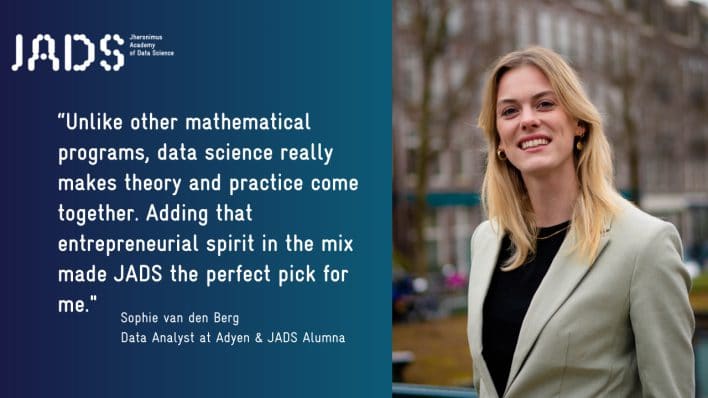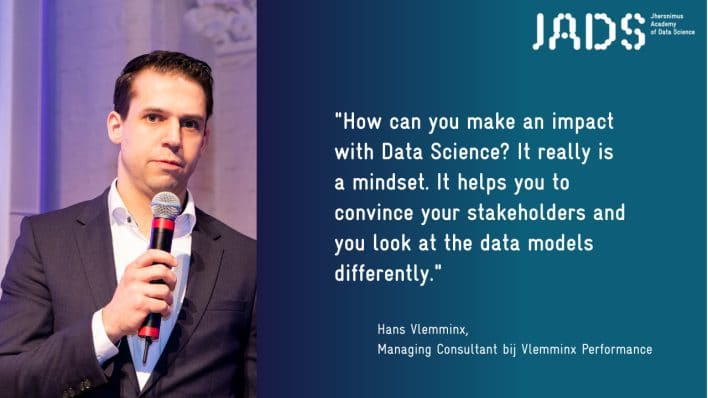Guest blog Harm Bodewes: “A day in the life of a Business Analytics Translator”
Posted on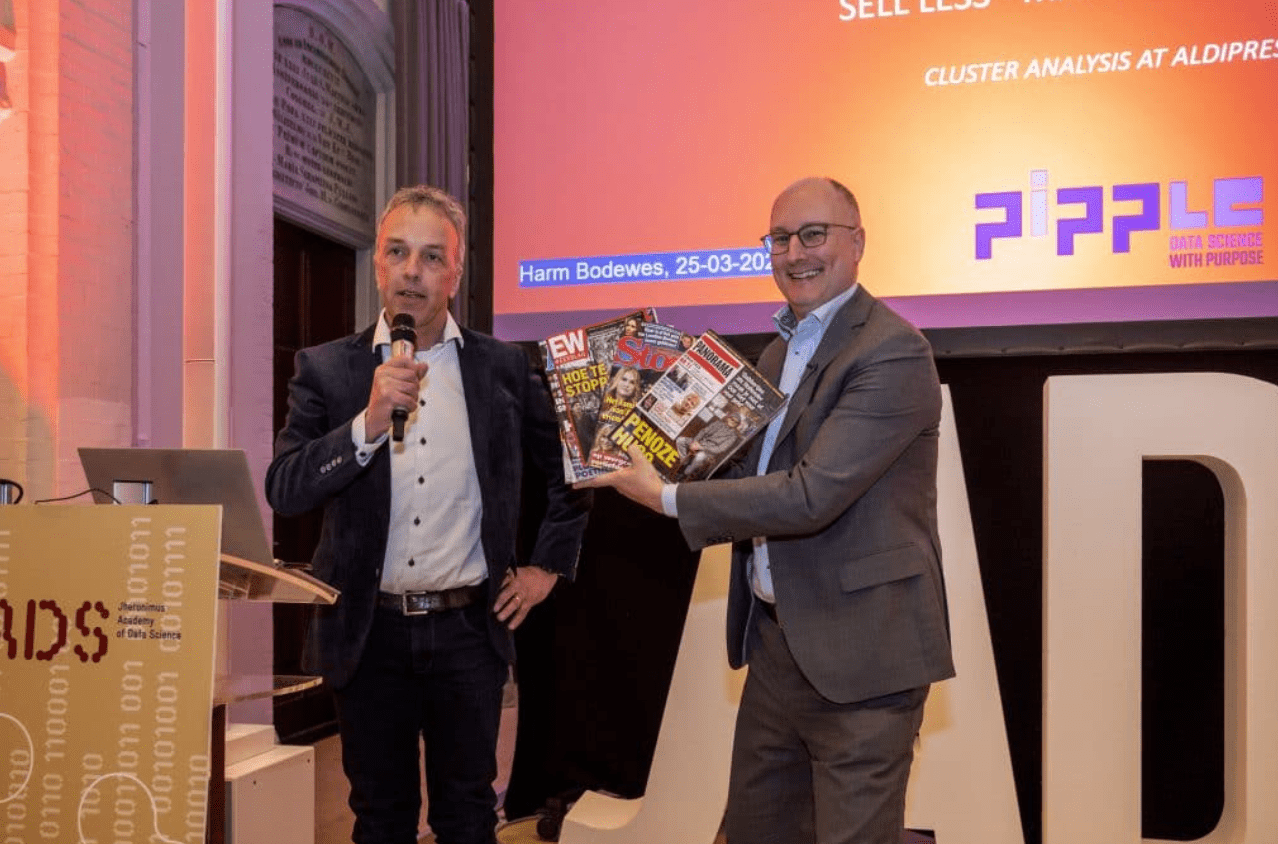
We would like to introduce you to Harm Bodewes, one of our graduates of our Professional Education program. Harm is partner at Pipple. In this guest blog he writes about his daily life as a Business Analytics Translator.
A day in the life of a Business Analytics Translator
Recently I graduated as a Certified Lead Data Scientist at JADS. At the graduation ceremony in the beautiful Mariënburg chapel, prof. Jeroen de Mast talked about new popular jobs like the “Business Analytics Translator”.
Do you know what a working day of a Translator looks like? And is this job as new as Jeroen explained?
Back to the Future
Let us go back to the eighties. We programmed in Turbo Pascal, computer languages like Python and Java did noy yet exist. Microsoft was an obscure company, which only sold “MS DOS”. Computer science was the exclusive territory of digital nerds.
The world needed people who understood computers and could use computers for improving organisations. To fulfil this need, Tilburg University introduced the new experimental field of study “Bestuurlijke Informatiekunde” (Information Management). Late eighties/begin nineties, many “BIKkers” conquered the labour market, I was one of them!
35 years later, we can see the same phenomenon. Data scientists and data engineers now conquer the world. This new human species can create the most phantastic prediction and classification models. Artificial Intelligence is everywhere. But again, it is difficult to explain the business value of models to “normal” people. So again, we see a growing need for people who bridge the gap between technique and business. The Translator must fulfil this gap!
The opinion of McKinsey
In 2018, McKinsey introduced the role “Business Analytics Translator“ in the article Analytics Translator: The new must-have role | McKinsey. In this article we can read about some major developments:
- Companies rely for decision making processes increasingly on Machine Learning techniques.
- To be successful in Data Science-projects, you need a cross functional team. Such a team consists of Data Scientists, Data Engineers, visualisation experts and Business Analytics Translators.
- McKinsey expects in 2026 a shortage of 2 to 4 million Business Analytics Translators in the US.
The activities of a Business Analytics Translator
Last year I worked in several customer projects as a Translator. The activities differ slightly from project to project, but in general I was responsible for:
- Defining the Y (“what do we want to predict”) and the x’s (features) to predict the Y.
- Defining scenarios. In a recent project for a rail company, we had to calculate the “what if” effects of a growing number of trains (passenger and cargo) on the expected number of incidents in 2030.
- Maintaining the product backlog. Of course, we use Scrum/Agile in all our Data Science projects (don’t we?), the Translator could typically take the role of Scrum Master, or even (if he/she is positioned at the business side) Product Owner.
- Preparing and organizing product demos of the prediction model.
- Explaining how algorithms like a binary decision tree, a random forest, … work in “common language”. Making AI explainable could be responsibility of the Translator.
An obvious question is “should the Translator be able to program in Python or R?”. Personally I think this really helps, as you should speak the language of the business and the language of the data scientists/data engineers. And this is what I really liked in the education at JADS, it is a cross functional program with lectures in both technical and business disciplines.
So, is the Business Analytics Translator doing the same as the BIKker back in the eighties?
Of course, there are differences:
- The BIKker used methods like ISAC, NIAM and Dataflow diagrams. Currently we use methods like CRISP-DM, UML en Flow down-diagrams. But is this really a difference?
- The BIKker programmed S2020-spreadsheets and relational databases like Oracle (version 4). The Translator is working with Data Warehouses, Data Lakes, NoSQL databases and Excel. But is this really a difference?
- The BIKker worked with 640Kb Personal Computers, connected by a LAN. The Translator is working in the cloud, facilitated by technology of Microsoft, AWS, Google and other suppliers. But is this really a difference?
- The BIKker used statistical methods like linear regression and decision trees. The Translator does the same but has the advantage that lots of code is available (for free!) in the Python-library Scikit-Learn. But is this really a difference?
- The Translator has far more data available. Do you want to add weather information to your model? Find on the internet. Adding demographic data to your model? Find it on the internet. We did not have that back in the 80s…
But in general, I think the jobs are very similar.
Summary
In this blog I tried to describe the activities of a Business Analytics Translator. He/she is really the same person as the BIKker of the eighties!
More information?
Do you want to know more about the Data Science for Professionals programs of JADS?

